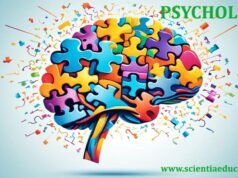Basic Computer Science Concepts
- “Introduction to Computer Science: Understanding the Basics”
- “Key Computer Science Terms and Their Importance in Exams”
- “Data vs. Information: Differences and Examples”
- “Binary Number System Explained for Beginners”
- “Understanding Algorithms and Flowcharts: A Step-by-Step Guide”
- “Programming Languages: Types, Features, and Uses”
- “What Are Data Structures? Basics for Students”
- “Fundamentals of Operating Systems: Key Concepts”
- “Computer Hardware vs. Software: A Simplified Comparison”
- “Evolution of Computers: From First Generation to AI”
Programming and Software Development
- “Python Programming Basics for Students”
- “Java for Beginners: An Introduction to OOP Concepts”
- “Top 10 Tips to Master C++ Programming for Exams”
- “Understanding Functional Programming with Examples”
- “What is Software Development Life Cycle (SDLC)?”
- “Debugging Techniques Every Programmer Should Know”
- “Introduction to Web Development: HTML, CSS, and JavaScript”
- “Database Management with SQL: A Beginner’s Guide”
- “Top Algorithms for Competitive Programming”
- “Agile vs. Waterfall: Choosing the Right Development Methodology”
Data Structures and Algorithms
- “What Are Data Structures? Key Types Explained”
- “Arrays vs. Linked Lists: Differences and Use Cases”
- “Stacks and Queues: Understanding Their Operations”
- “Binary Search Trees Simplified for Beginners”
- “Hashing Techniques: A Comprehensive Overview”
- “Sorting Algorithms: Quick Sort, Merge Sort, and More”
- “What is Dynamic Programming? Examples for Students”
- “Graphs in Computer Science: Key Concepts and Algorithms”
- “Understanding Big-O Notation: Measuring Algorithm Efficiency”
- “Recursion in Programming: Basics and Applications”
Operating Systems
- “What is an Operating System? Functions and Types”
- “Windows vs. Linux: Which OS is Better for Students?”
- “Process Scheduling in Operating Systems: Key Concepts”
- “Memory Management Techniques in Modern OS”
- “Understanding Deadlocks in Operating Systems”
- “File Systems Explained: FAT32, NTFS, and More”
- “Virtualization in Operating Systems: Basics and Applications”
- “Multithreading and Concurrency: Concepts and Examples”
- “Introduction to Distributed Operating Systems”
- “Real-Time Operating Systems: Features and Applications”
Networking and Security
- “What is Computer Networking? Basics and Types”
- “TCP/IP vs. OSI Model: A Detailed Comparison”
- “Understanding IP Addressing: IPv4 vs. IPv6”
- “What Are Protocols? HTTP, FTP, and More Explained”
- “Wireless Networking: Wi-Fi, Bluetooth, and 5G”
- “Cybersecurity Basics: Protecting Your Digital World”
- “Understanding Firewalls and Their Role in Security”
- “Introduction to Cryptography: Basics for Students”
- “What Are VPNs? How Do They Ensure Privacy?”
- “Cloud Computing: An Overview of AWS, Azure, and Google Cloud”
Artificial Intelligence and Machine Learning
- “What is Artificial Intelligence? Basics for Students”
- “Machine Learning vs. Deep Learning: Key Differences”
- “Neural Networks Explained with Examples”
- “Supervised vs. Unsupervised Learning: A Comparative Guide”
- “Applications of AI in Everyday Life”
- “Understanding Natural Language Processing (NLP)”
- “What is Computer Vision? Applications and Examples”
- “Robotics and AI: The Future of Automation”
- “Top AI Algorithms You Must Know for Exams”
- “Challenges and Ethics in Artificial Intelligence”
Databases
- “What is a Database? Types and Uses Explained”
- “Relational vs. Non-Relational Databases: Key Differences”
- “Normalization in Databases: A Step-by-Step Guide”
- “Understanding SQL Joins with Examples”
- “Introduction to NoSQL Databases: MongoDB, Cassandra, and More”
- “Database Transactions: ACID Properties Explained”
- “Indexes in Databases: What, Why, and How”
- “Database Security: Protecting Your Data”
- “What is Data Warehousing? Basics for Students”
- “Big Data and Hadoop: An Introduction”
Emerging Technologies
- “Blockchain Technology: Basics and Applications”
- “What is the Internet of Things (IoT)?”
- “Quantum Computing: The Next Revolution in Computing”
- “Edge Computing vs. Cloud Computing: A Comparative Study”
- “Understanding Augmented Reality (AR) and Virtual Reality (VR)”
- “Introduction to 3D Printing and Its Applications”
- “The Role of Cyber-Physical Systems in Industry 4.0”
- “Green Computing: Eco-Friendly Technology Practices”
- “Digital Twins: The Future of Simulation Technology”
- “Top Programming Languages for AI and Robotics”
Exam-Specific Topics
- “Top Computer Science Topics for SAT and ACT Exams”
- “IB Computer Science: Tips for Scoring High”
- “Key Programming Topics for JEE Main and Advanced”
- “Important Networking Topics for CCNA Certification”
- “Computer Science Syllabus for Cambridge IGCSE”
- “AP Computer Science: Study Strategies and Resources”
- “GATE Computer Science: Must-Know Topics and Tips”
- “Common Programming Questions in Competitive Coding”
- “Top Database Management Topics for GRE Computer Science”
- “Understanding Machine Learning Basics for AI Certifications”
Miscellaneous Topics
- “History of Computers: Key Milestones in Technology”
- “Open Source Software: Benefits and Challenges”
- “The Role of Cybersecurity in Business and Society”
- “What is Ethical Hacking? Basics for Students”
- “Role of Algorithms in Search Engine Optimization (SEO)”
- “Understanding Software as a Service (SaaS)”
- “Gaming Technology: The Science Behind Video Games”
- “Introduction to Mobile App Development: Android vs. iOS”
- “Understanding the Role of APIs in Software Development”
- “Preparing for Coding Interviews: Common Questions and Solutions”















of course like your website however you need to test the spelling on quite a few of your posts. Many of them are rife with spelling issues and I in finding it very troublesome to inform the truth on the other hand I will surely come again again.